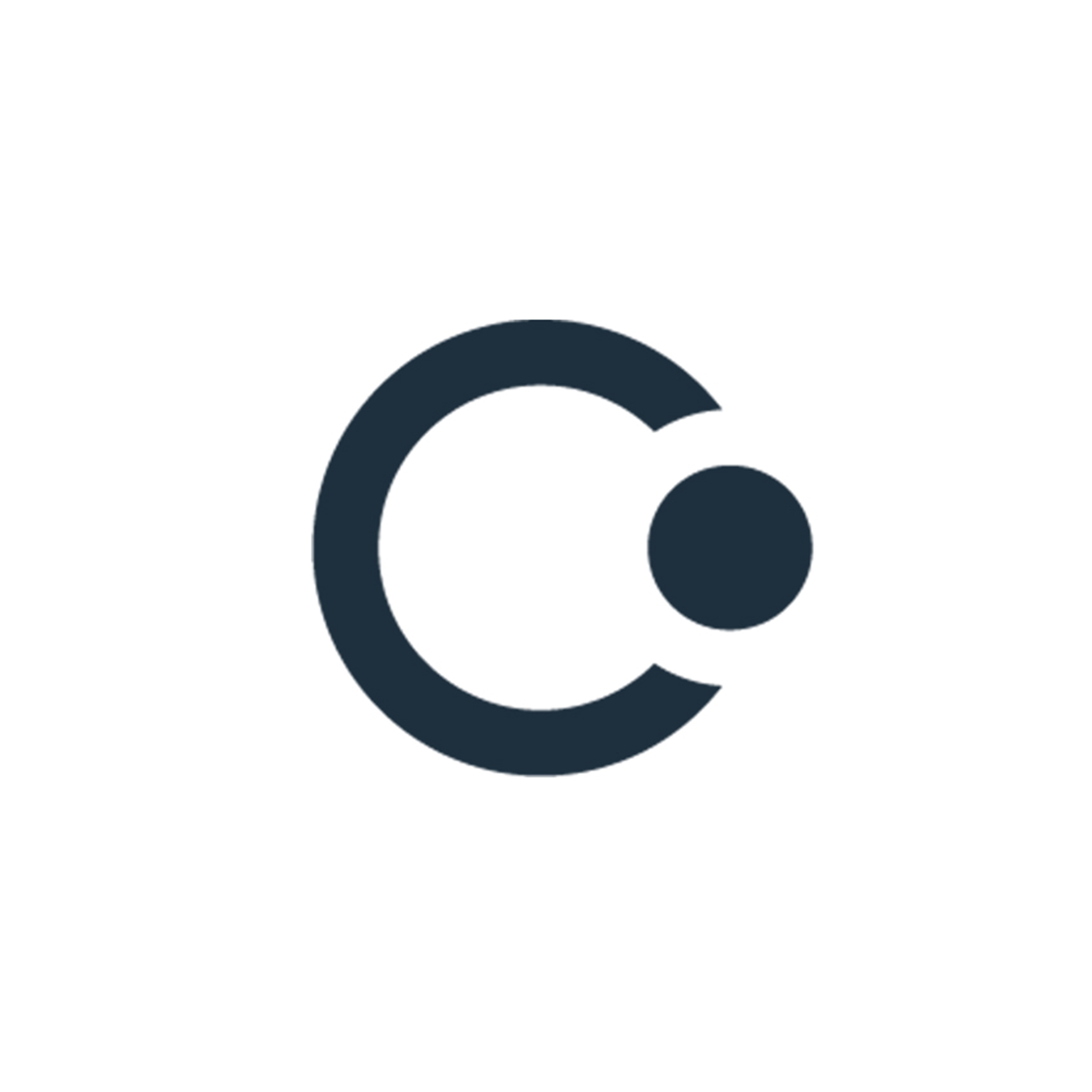Original author: Jill, LD Capital
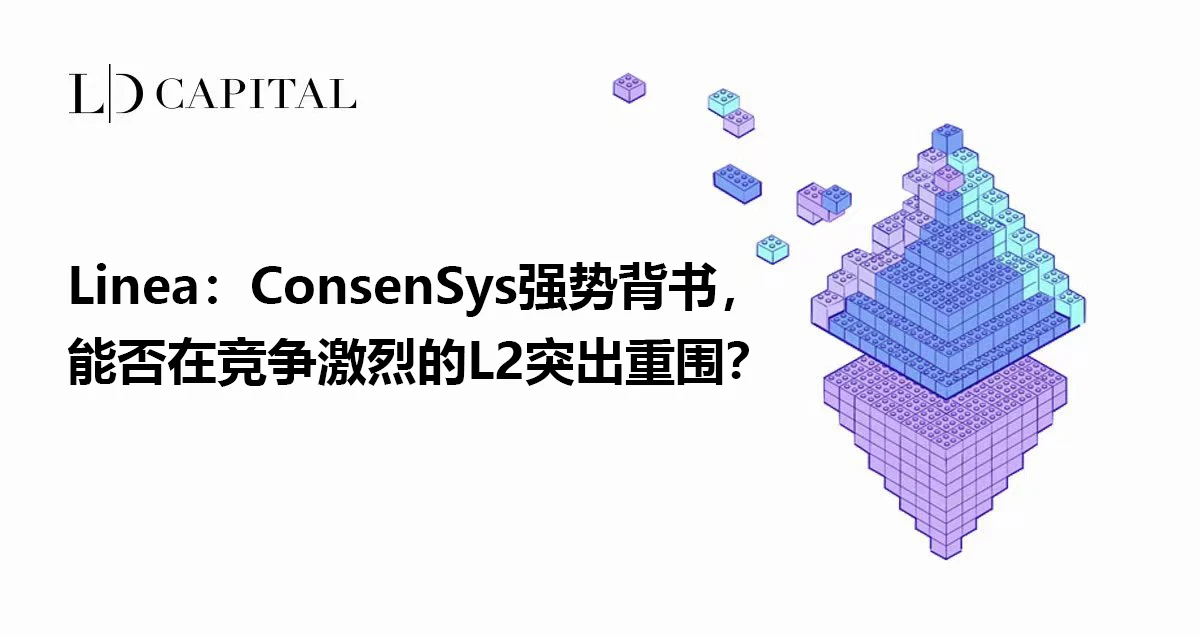
1. Project Introduction
Linea is a Layer 2 solution developed by ConsenSys, aimed at improving the scalability and efficiency of Ethereum. As a zkEVM, Linea utilizes zero-knowledge proofs with EVM-equivalent to enable developers to easily build scalable dapps or migrate existing dapps.
1. Team
Linea is a subsidiary of ConsenSys, founded in 2014 and headquartered in Brooklyn, New York. It maintains good relationships with government organizations (such as the Inter-American Development Bank, the European Commission, and the South African Reserve Bank) and industry giants (such as Microsoft and JPMorgan Chase), and is a leading member of Ethereum Alliance and other cryptocurrency industry committees.
ConsenSys initially started as a venture capital business and underwent restructuring in 2020, splitting the company into ConsenSys Mesh and C
There are two entities in ConsenSys. ConsenSys Mesh is an investment entity, while Software focuses on blockchain product development. Its products include the native crypto wallet Metamask, which has over 30 million monthly active users and is the largest gateway for encrypted traffic in the blockchain. It also includes Infura, a blockchain development tool for developers, with over 400,000 users. ConsenSys is one of the most influential and powerful companies in the Ethereum ecosystem.
Currently, Metamask has been spun off from ConsenSys as a standalone entity. The members of the Linea team still work for ConsenSys, with a total of 837 registered employees on LinkedIn. Linea can seamlessly integrate with ConsenSys' products, such as being pre-installed in the Metamask wallet plugin, eliminating the hassle for users to manually add networks.

Source: ConsenSys Official Website
2. Financing
Linea has not conducted separate financing. Its parent company, ConsenSys, has completed four rounds of financing from 2019 to 2022, with a total financing amount exceeding 700 million US dollars. The participating companies include top cryptocurrency investment institutions such as Dragonfly and Coinbase Ventures, as well as traditional financial giants such as Microsoft, SoftBank, and Temasek.
With the rich industry resources of ConsenSys and the large user base of Metamask, Linea comes with industry popularity.
II. Technical Implementation
1. SNARK Proof Technology based on Vortex
Source: ethresear.ch
The above is the internal proofing system process in Linea. To prove the occurrence of a transaction, Linea starts with arithmetization, which converts a computer program into mathematical expressions that zero-knowledge proofs can understand. This process transforms transactions into traces and a set of constraints that verify the accuracy of the computation.
Next, Linea uses the internal proofing systems Vortex and Arcane. These internal proofing systems recursively reduce the size of the proof, continuously improving the efficiency and compactness of the proof through optimization and specific algorithms.
Finally, by using the recursive optimization of the internal proofing systems, the proof is further compressed into the external proofing system gnark, ultimately achieving verifiability on Ethereum.
Source: Pantheon
Most of the above proof systems are based on Groth 16 and Plonk for improvements. Pantheon performed benchmark testing on Linux Server (20 cores) and Mackbook M1 Pro (10 cores) devices, including constraint count, proof generation time, memory load, and CPU utilization. The research found:
1) In terms of constraint count: Plonk framework is better than Groth 16, with gnark having the most and Boojum having the least.
2) In terms of proof generation time: Groth 16 framework is faster than Plonk framework, with gnark being the fastest.
zkEVM is a zero-knowledge proof development framework.
zkEVM is a virtual machine that is compatible with EVM and friendly to zero-knowledge proofs. However, EVM itself was not designed with ZK friendliness in mind, so the overall state transition of Ethereum needs to be reconstructed using zero-knowledge proof technology. By being more aligned with Ethereum's specifications and standards, developers can more easily build applications and integrate them into the Ethereum ecosystem. Therefore, better compatibility with Ethereum is the goal of most zkEVM-based projects.
Currently, the industry generally uses Vitalik's classification as a reference, and Linea is in the Type 2 stage, which is fully equivalent to EVM but not entirely equivalent to Ethereum. The goal is to be fully compatible with existing applications while optimizing transaction verification time.

It should be noted that these types do not have a preference, but rather a trade-off between development technology choices and proof generation speed. Types with lower coding difficulty are more compatible with existing infrastructure but are slower in speed. Types with higher coding difficulty are less compatible with existing infrastructure but are faster in speed. Types 1 and 2 are easier to implement, but these types can also be converted.
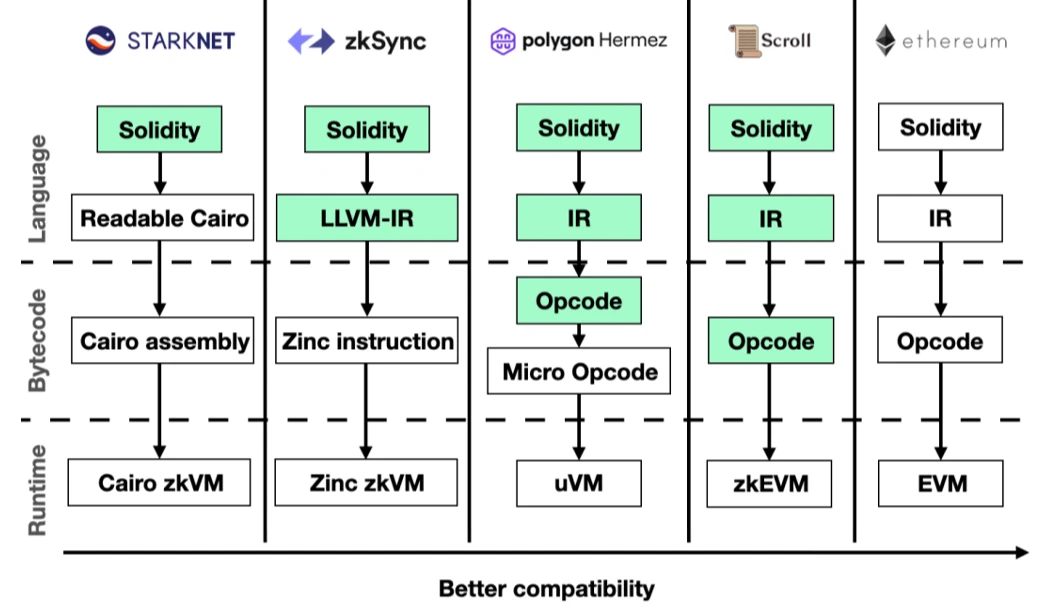
Source: foresightnews

In the above solution, the further to the right the EVM compatibility solution, the better. Developers can also use familiar contract development languages and tools, but implementing EVM Opcode as a circuit is more challenging.
The Linea zkEVM solution is relatively easier to implement. Its project goal is to improve the proof efficiency as much as possible on the basis of EVM compatibility, making it easier to attract Ethereum developers and expand the ecosystem quickly.
Three, Operational Data
1. TVL
The ConsenSys team proposed to build a zkEVM based on SNARK in July 2021, and the ConsenSys zkEVM public testnet was launched in 2023, renamed as Linea. The Linea mainnet Alpha version was officially launched on July 19th.
Source: dune analytics
Compared to other Layer 2 projects, the Linea mainnet has a shorter time to market, and the data is temporarily not comparable. Currently, the Optimistic Rollup solution is developing rapidly, while the ZK Rollup is limited by factors such as compatibility with Ethereum, proof generation efficiency, and transaction costs, resulting in slower development. The best-developed ZK-based Layer 2 solution so far is zkSync Era, but its TVL is only 7% of Arbitrum, and Linea TVL is only 7% of zkSync Era.
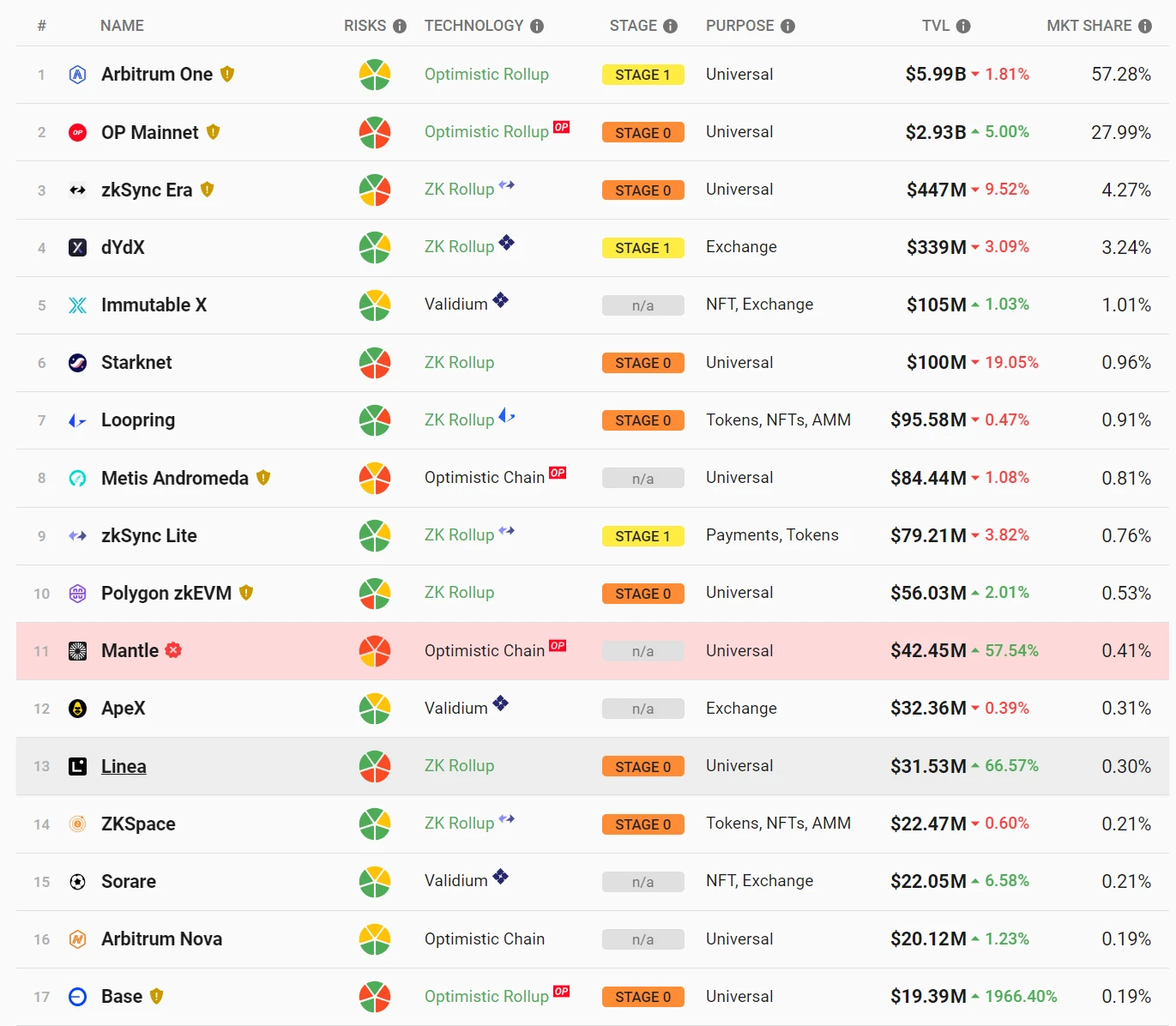
Source: l 2 b eat.com
Previously, there were user reports that the Linea official cross-chain bridge for processing Layer 2 to Layer 1 (Ethereum) redemptions seemed to have a certain delay issue. The cross-chain bridge interface claimed that the entire process would take 8 to 32 hours, but multiple users reported that it took 4 days to retrieve funds.
The official explanation states that in order to carefully monitor transactions and protect user asset security, the team initially added a withdrawal delay of at least 8 hours for Linea Mainnet Alpha. As the system matures, this delay will gradually be reduced and eventually eliminated. However, due to the rapid increase in bridged assets, the withdrawal time on Ethereum has temporarily increased. The team is working hard to accelerate the transaction of bridged assets from L2 to L1, and within the next few days, it will return to the target of 8 to 32 hours. All pending transactions will be processed.
2. Linea Voyage
Linea launched the testnet Voyage (Odyssey) event on May 2, the event lasted for 9 weeks, attracting over 300,000 addresses to participate. Since the beginning of the event, the level of on-chain activity has significantly increased due to the anticipation of airdrops.
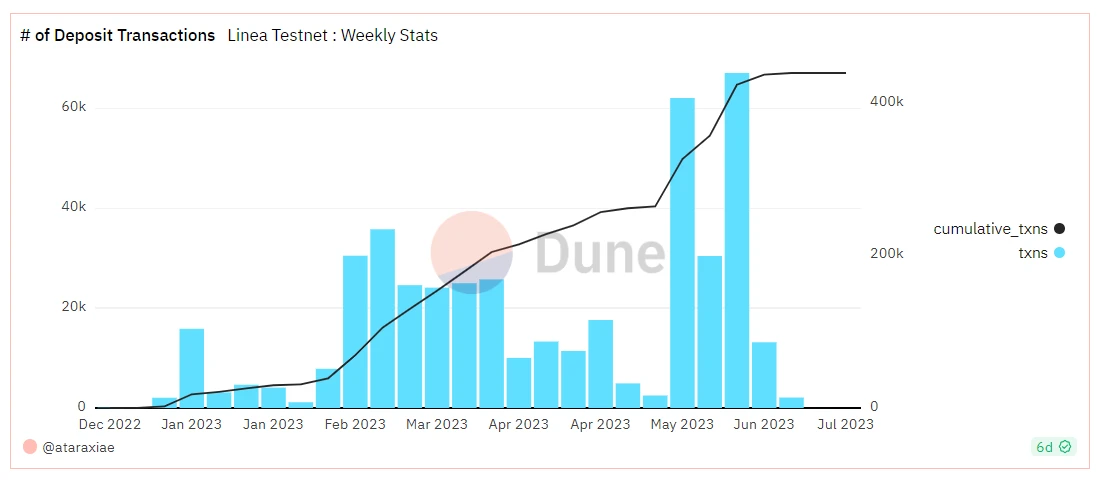
Source: dune analytics
On the day of the mainnet launch, Linea announced the distribution of NFT rewards to users participating in the Odyssey event. A total of 352,000 NFTs will be airdropped to users. The NFTs are divided into 5 tiers, with the first four tiers directly airdropped to user wallets, and the fifth tier requires manual minting, which is now open for a limited time of one month. Users can obtain NFTs of different tiers based on their Odyssey points.
3. Social Media

IV. Ecology
The Linea mainnet currently has 56 ecosystems connected and will soon have 106 ecosystems connected. According to defillama data, the current TVL scale is $15.04 million. This section will provide a brief introduction of the native protocols with a certain scale:
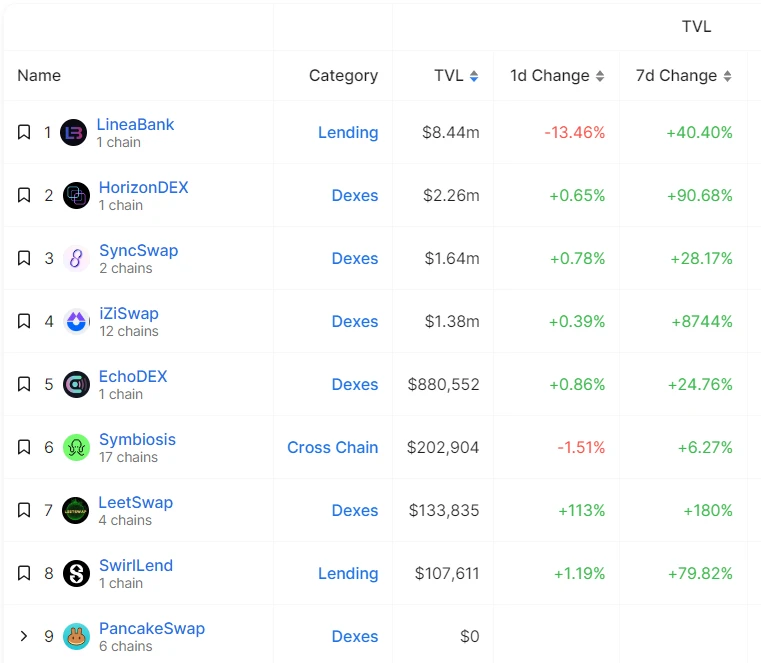
Source: defillama.com
1. LineaBank
LineaBank is a native lending protocol built on Linea, which focuses on privacy protection and scalability. The protocol empowers users with full control over their assets and eliminates intermediaries through decentralized markets, providing users with competitive interest rates. According to defillama data, LineaBank is currently the project with the highest TVL on Linea, with a total value locked of $8.44 million.
Economic Model
The total supply of LAB tokens is 100 million, and the token distribution is as follows. LAB will provide airdrops to the community, distribute tokens to initial liquidity participants and IDO participants. Some tokens will unlock after TGE and others have different lock-up periods for token holders.
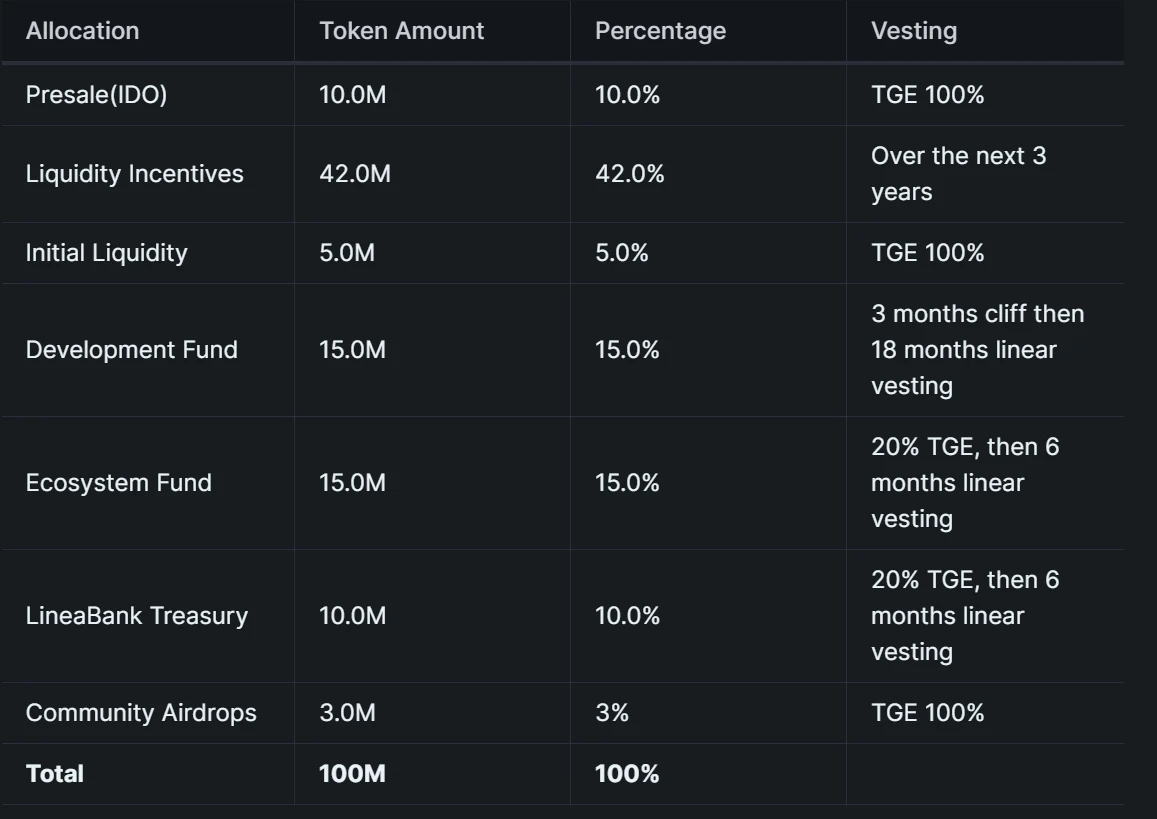
Source: LineaBank Official Documentation
The LineaBank Protocol reserving 80% of the protocol's revenue, meaning 20% of the revenue will be distributed to liquidity providers, while 80% of the protocol's revenue, which is 80% of 80% (64%), will be distributed weekly to LAB token stakers. However, LAB token stakers can only claim LAB tokens when claiming their share of the protocol's revenue, as the protocol will automatically use assets such as ETH or USDC to buy back LAB tokens and distribute them to users.
LineaBank will conduct an IDO from August 7th to August 14th, with a total distribution of 5 million tokens and a target fundraising of 400 ETH. Based on the current price of $1864/ETH, the price per LAB token is $0.15.

Source: LineaBank Official Website
LineaBank held a "pre-mining" activity after being launched on the Linea mainnet, which took place from July 19th to August 11th. Participants in the activity can receive 3,000,000 $LAB tokens (3% of the total supply, equivalent to $450,000). These tokens can be claimed after the IDO.

Source: LineaBank Official Website
2. HorizonDEX
HorizonDEX is a centralized decentralized exchange that allows users to allocate liquidity within custom price ranges, thereby enabling traders to maximize efficiency and reduce slippage. As a native project on the Linea blockchain, HorizonDEX currently has a TVL of $2.26 million.
On July 19th, HorizonDEX launched the "Loyalty Program" to incentivize trading and provide yHZN token rewards to traders and liquidity providers. The program will last for 14 days and end on August 2nd. Participants in the loyalty program will share a total of 900,000 HZN tokens based on their points.
According to the data from the official website of HorizonDEX, the current DEX trading volume is $2,079,000, the total trading fees in the past 24 hours is $6,650, and the number of transactions is approximately 15,000. It has been steadily growing since its launch and has not experienced a period of rapid growth.
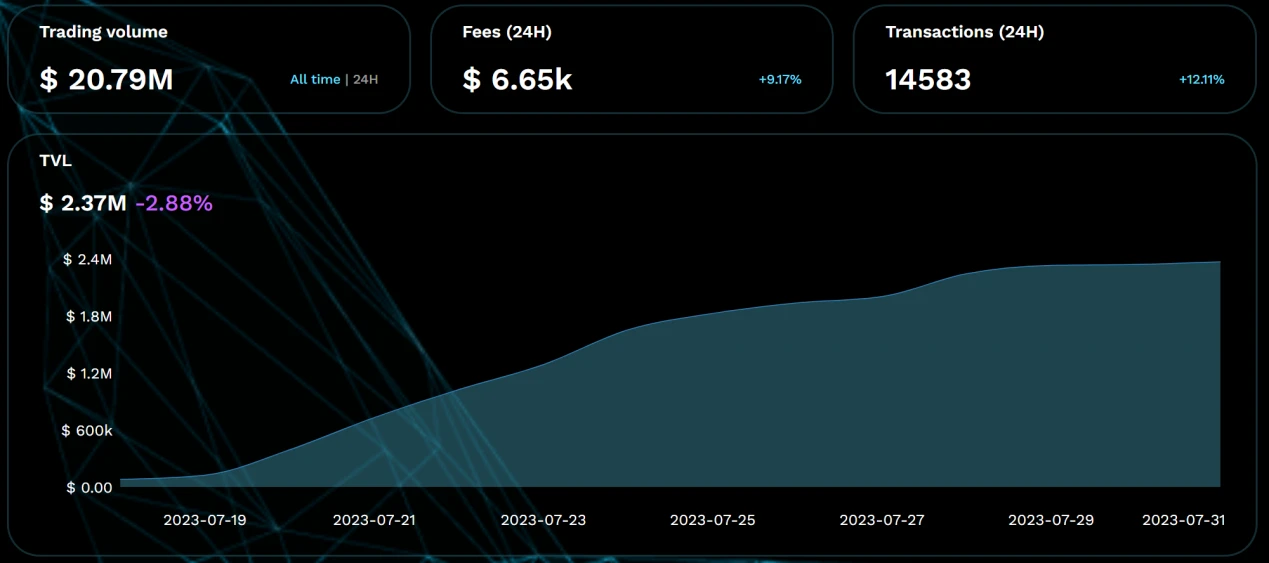
Source: HorizonDEX Official Website
Economic Model
Total supply of HZN tokens is 100 million, of which 15% is allocated for IDO, 8% for team allocation, 15% for project development, 12% for marketing allocation, and 35% for liquidity mining. The specific allocation is shown below. Except for IDO tokens which are fully unlocked immediately after TGE, the remaining tokens have lock-up periods of either 6 months or 24 months. A total of 42.25 million tokens will be unlocked at genesis.
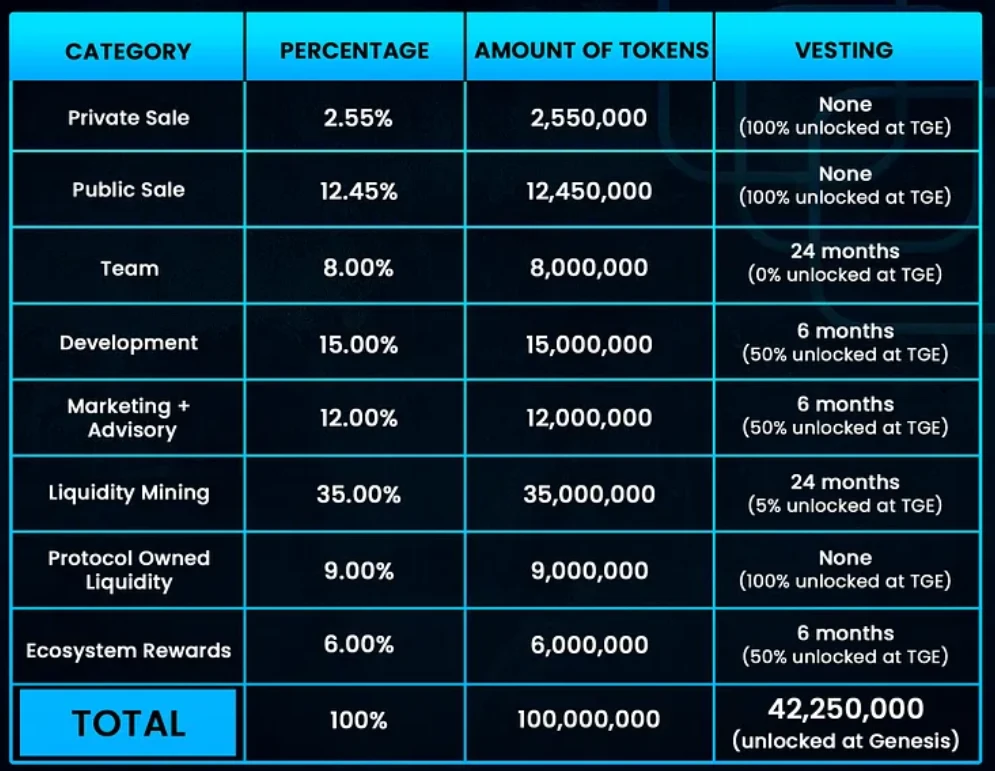
Source: HorizonDEX official documentation
HorizonDEX's private and public sale took place from July 26th to July 31st and was the first project to conduct an IDO on Linea. The private sale round has already concluded, with a target funding of 135 ETH and a final raise of 143.5 ETH. The private sale token price was 0.000052942 ETH/HZN, calculated at the current price of $1864/ETH, which is $0.099/HZN.

The public sale aims to raise 870 ETH, with a current total fundraising of 240.9 ETH. The public sale price is 0.000059036 ETH/HZN, approximately $0.11/HZN.

Source: HorizonDEX Official Website
3. EchoDEX
EchoDEX is a decentralized trading platform built on the Linea Consensys network and is also a native project on the Linea blockchain. It is the first decentralized exchange (DEX) to be launched on Linea.
Economic Model
ECP token has a total supply of 100 million, and the token allocation is as follows, with varying degrees of lock-up periods. The token currently only has staking functionality and will soon launch a loyalty program.
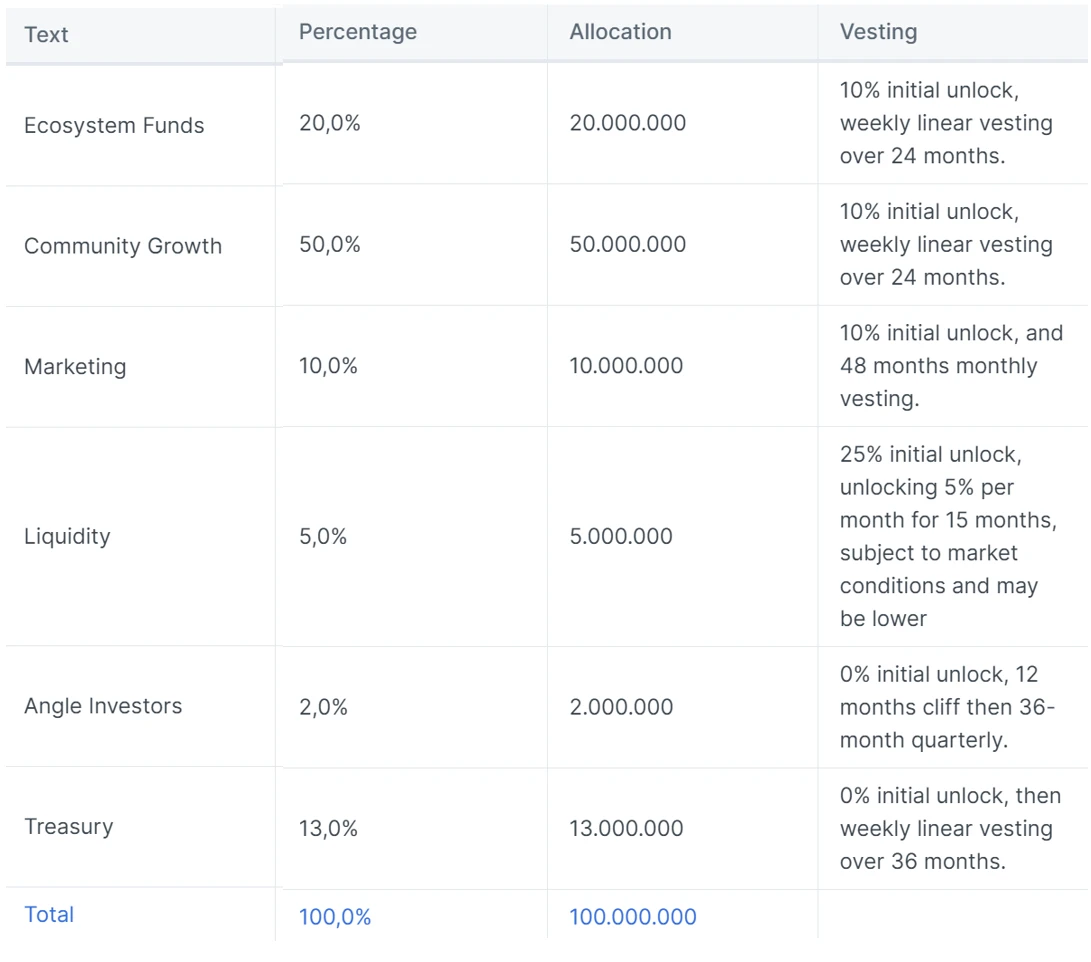
Source: echoDEX Official Documentation
The priority protocols launched on the Linea ecosystem are DEX and lending, but the economic models are similar. In the early stages, token incentives are needed to attract liquidity. Currently, LineaBank's incentive mechanism may be more appealing to users, but it's still speculative liquidity. Whether it can leverage its first-mover advantage to retain users remains unknown. It will also face competition in incentives from established DeFi platforms like Aave and Sushi.
References
1. "ConsenSys Leads, Linea Emerges: Breaking ZK Rollup Restrictions, Achieving Full EVM Compatibility"
2. "The Pantheon of Zero Knowledge Proof Development Frameworks"

